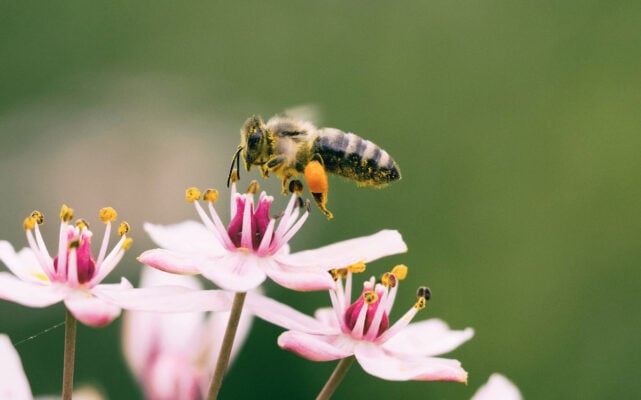Why backyard beekeeping may be the future of the planet.
If you’ve followed headlines on environmental issues at all, you’ve seen this fact pop up at least once: bees are in danger.
Honey bee populations have long suffered the effects of Colony Collapse Disorder (CCD), a situation that stems predominantly from pesticide use, invasive species activity, and seasonal complications from climate change. The number of bee colonies surviving each winter has fallen 25-30% in the last 15 years.
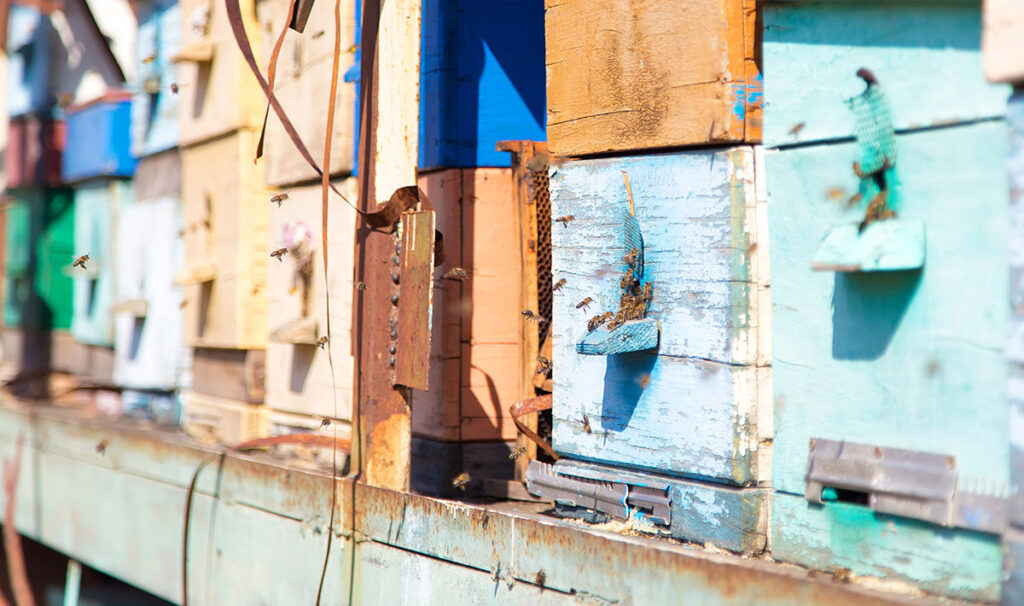
No matter your feelings about bees themselves, CCD raises serious cause for concern. Bee colony stability is directly linked to food stability, and much plant growth depends on reliable pollination. One way to directly support bee populations is by keeping bee hives of your very own. Despite
common fears, beekeeping can be made safe and accessible in even the most basic
backyard settings.
GET IN THE KNOW
According to Lindsay Graves, owner of Fourth Street Farm, a professional vegetable garden consultation service, backyard beehives don’t take a ton of work or experience. Graves has supported her personal bee population for several years running, first working with a local beehive educator to acquire the necessary knowledge. Regional beekeepers associations and programs like The Bee Conservancy and PerfectBee offer both online and in-person beekeeping lessons.
GATHER YOUR SUPPLIES
To start out, you’ll need a central hive to house the main bee population. Below thecentral hive sits a separate brooder box for the queen and her eggs. Atop these boxes, you’ll place the super boxes—where the bees produce the actual honey—complete with frames to hold the honey and honeycomb. You’ll then insert a queen excluder sheet with perforations small enough to keep the queen trapped in hive but large enough to allow the rest of the bee population to migrate between the hive and the supers. The stack will need a different bottom board depending on the season—a screened board during the summer for better ventilation during the hot and muggy months—and a solid board throughout the winter to help trap in heat.
Wintertime also calls for an entrance reducer at the base of the hive to protect from inclement weather. “Entrance reducers also help prevent pests like mice or other small animals from seeking shelter inside the hive in the winter,” says Bill Theiss of the Shenandoah Valley Beekeepers Association, Shenandoah Valley, Virginia. “They can also help the hive defend against robbing in the summer or during periods of drought.”
You’ll also place a varroa trap drawer along the bottom of the hive, to keep an eye on the amount of varroa—an invasive mite species that attacks bees—currently wreaking havoc in your hive so that you can treat for infestation as needed. Top the whole thing off with a roof cover, and your hive is ready for action.
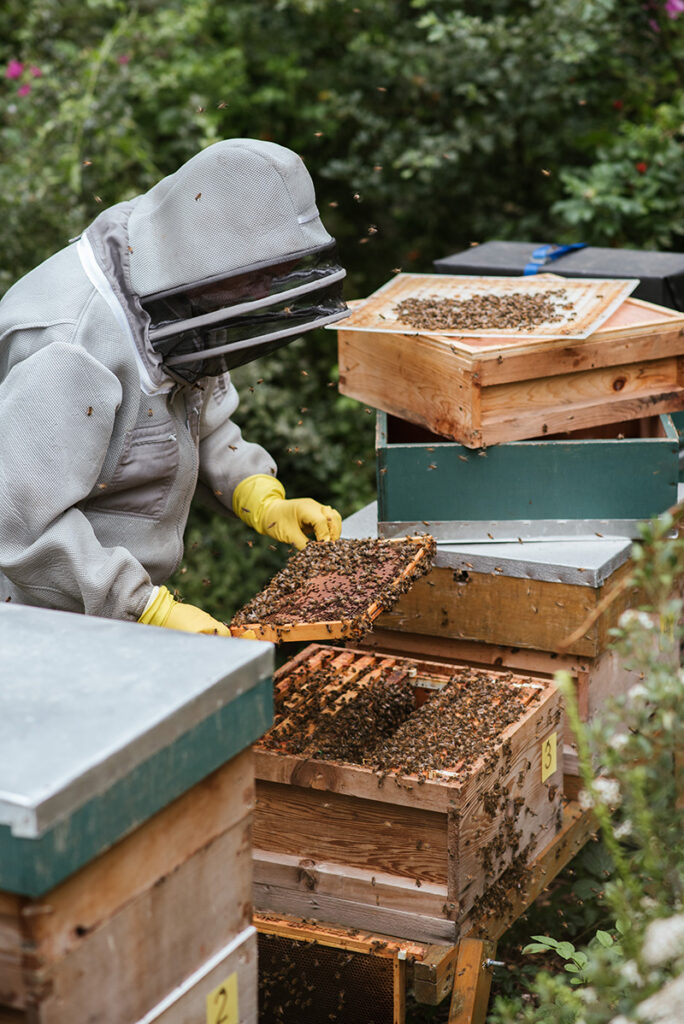 Novice beekeepers should also consider obtaining a pre-made hive. “I was lucky enough to re home a hive from a friend,” says Graves, “which really cut down on the initial time and materials. I also felt more comfortable getting started that way because I knew that it was built well enough to keep the bees happy.”
Novice beekeepers should also consider obtaining a pre-made hive. “I was lucky enough to re home a hive from a friend,” says Graves, “which really cut down on the initial time and materials. I also felt more comfortable getting started that way because I knew that it was built well enough to keep the bees happy.”
If you’ve got enough carpentry experience to go the DIY route, make sure to follow a hive construction plan for guidance. Bees can be picky when it comes to their ideal habitat for producing honey, so their success rides on your careful construction.
STAY SAFE
Beekeeping doesn’t have to be dangerous. Designate a space for your hive, and check with your immediate neighbors to make sure you’re not near someone with a bee allergy. As for protective gear, you’ll at least need a bee veil and gloves to protect your face and hands. But a full bee suit
goes a step further. “Bees become more aggressive in the late summer when nectar flows subside due to drought,” says Theiss, so you may need more or less protection at different times of year.
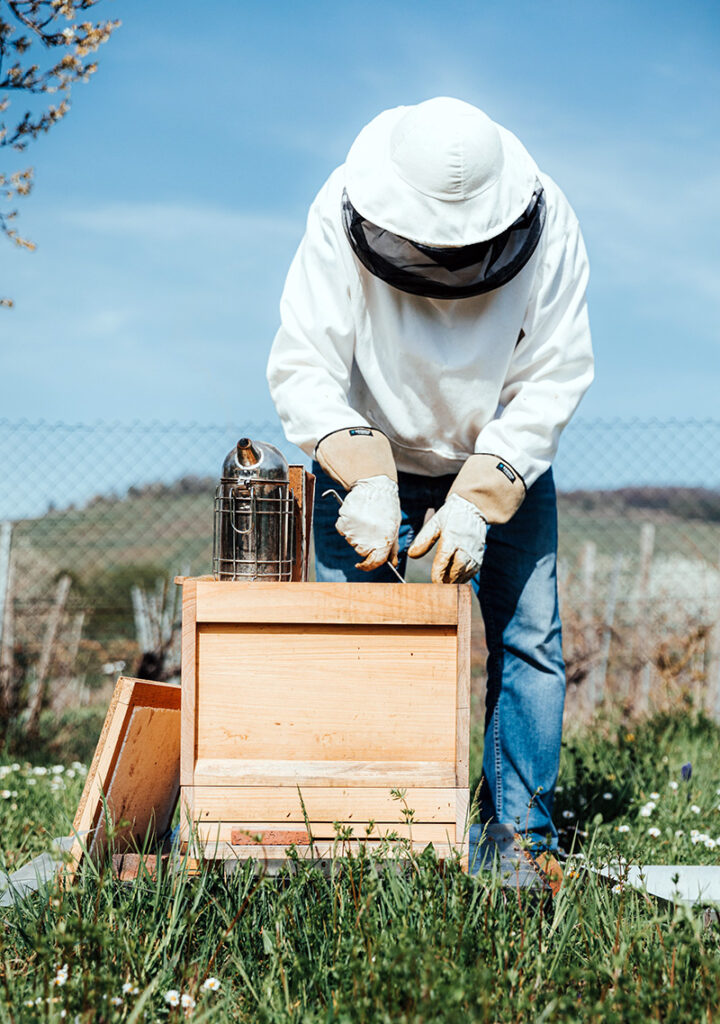
Graves offers the reminder that, “Honeybees don’t really want to sting us as much as we think they do. They die when they sting, so they save that weapon for when they’re feeling the most threatened.” As an extra precaution, you can add a smoker to your operation. “We burn old pieces of burlap or leaves in our smoker,” Graves explains, “Ittricks the bees into thinking there’s a wildfire nearby. That convinces them to stay inside the hive for safety and feast up for energy, so they’re distracted from stinging us.”
PUT IN THE TIME
Graves only checks on her established hive about one to two times a month to monitor honey production and treat any varroa mite infestations that pose a threat to the bees. Most of the time and effort comes in during the initial stages. Buying or inheriting a hive like Graves did keeps it simple: “Just stack it all up and add in the bees!”
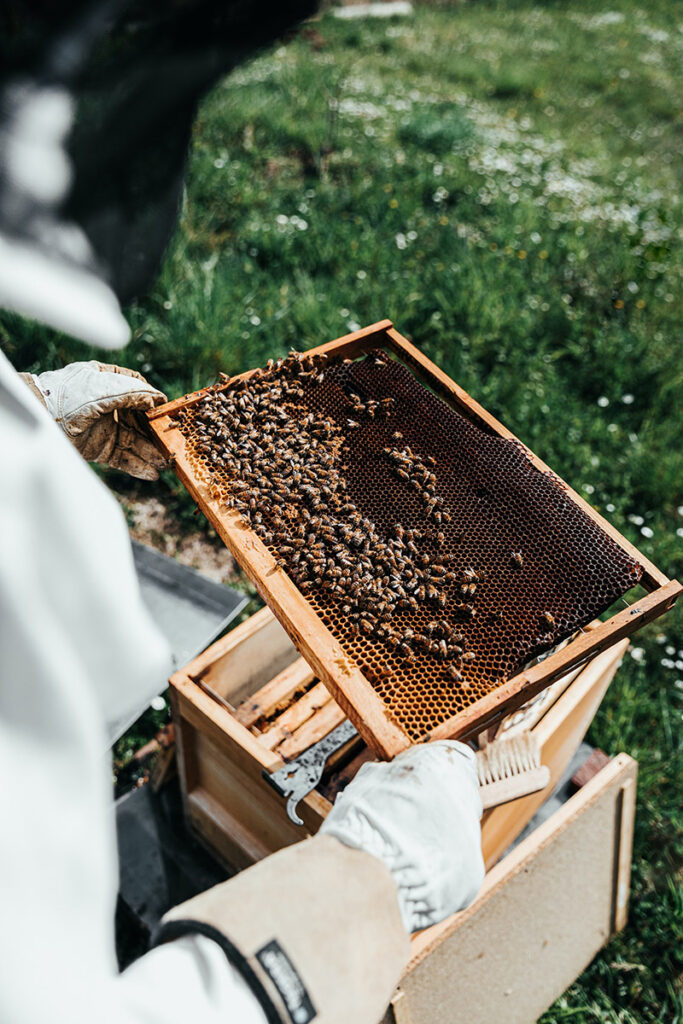
If you’re building each of the components yourself, factor in the time it will take to construct each of the pieces. The real time commitment is rooted in
patience. Graves didn’t actually harvest any honey from her hive the entire first year, because her bee population was still building a solid foundation. “The bees seemed stressed, and didn’t have enough honey built up yet for me to take from,” says Graves. “Bee hives need a base of 40 to 100 pounds of honey, depending on the season and where you live, to feed off of and make them feel safe.” New beekeepers can expect to wait about a year for their bees to build up a big enough base before harvesting.
EXPLORE YOUR OPTIONS
If you can’t commit to a whole hive just yet, you can still offer your support to native bee populations by tailoring your garden and outdoor spaces for the bees.
Bees need both pollen and nectar to feed off of and supply to the whole hive. Any plants with both pollen and nectar sources will do the trick (hazel, snowdrops, primroses, saffron, willow, hellebore, heather, wild cherry, dandelion).
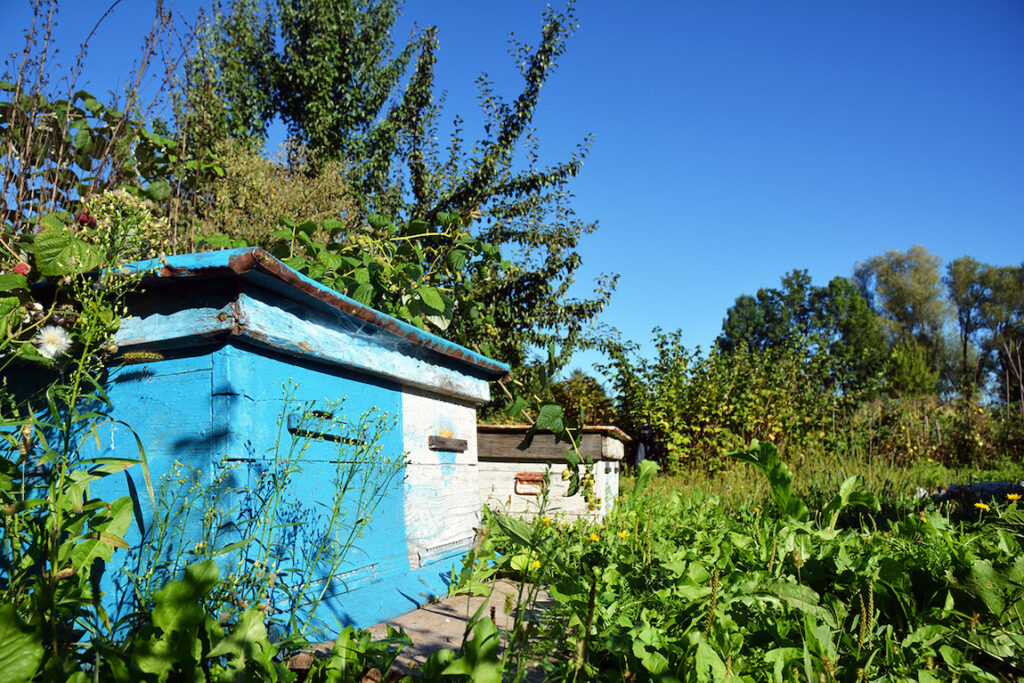
“Make sure to focus on plants native to your exact region,” warns Graves. “Native bees need native food, and they know how to tell the difference.” In the Mid-Atlantic where Theiss and his fellow Shenandoah Valley beekeepers operate, “Maples and willows are some of the first trees to bear sustenance to bees, and goldenrod makes a good option near the end of the season.” Beyond plants themselves, bees also benefit from expanses of dirt because “Loose bees spend most of the winter hiding underground,” Graves notes.
Any bare dirt that you can provide within your landscaping plans gives them space to safely burrow down. Finally, bees appreciate a
good water source. Consider installing bird baths, small ponds or even specialized bee drinking balls. Fill deeper water sources with pebbles or stones
because “Bees can’t swim,” Graves says. “Give them something to perch on so that they don’t drown.”
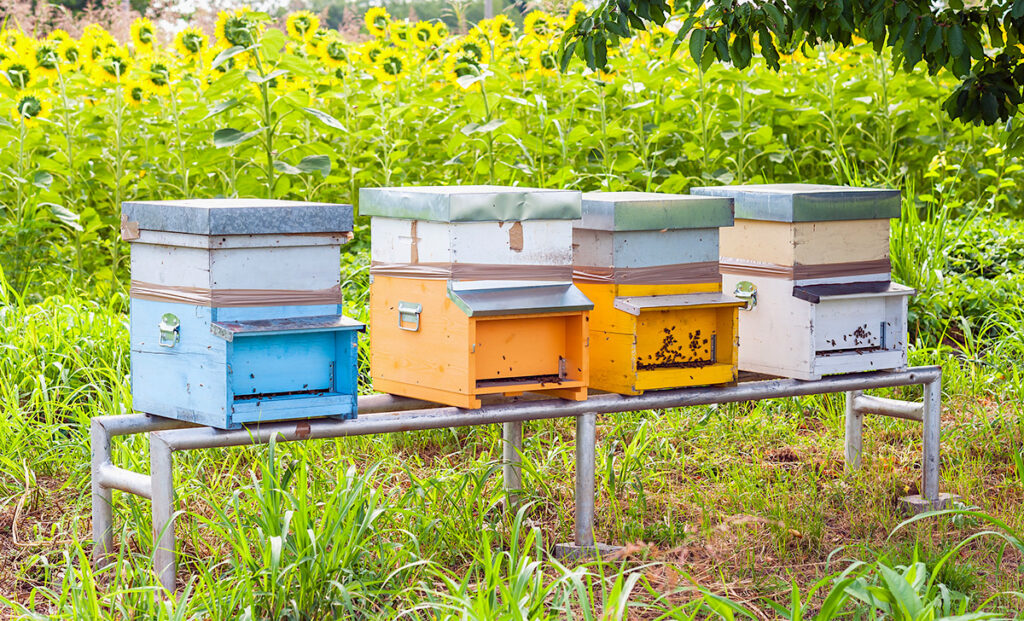
Whether you install a complete backyard beekeeping system or simply factor bees into your gardening plans moving forward, we can all do our part to support
honeybee populations—and create a positive ripple effect through the food chain.
This article was featured in our Spring/Summer 2022 edition of Nest magazine. Follow along here and follow us on Instagram for more expert tips, tricks, and advice for home owners and investors at all levels.
